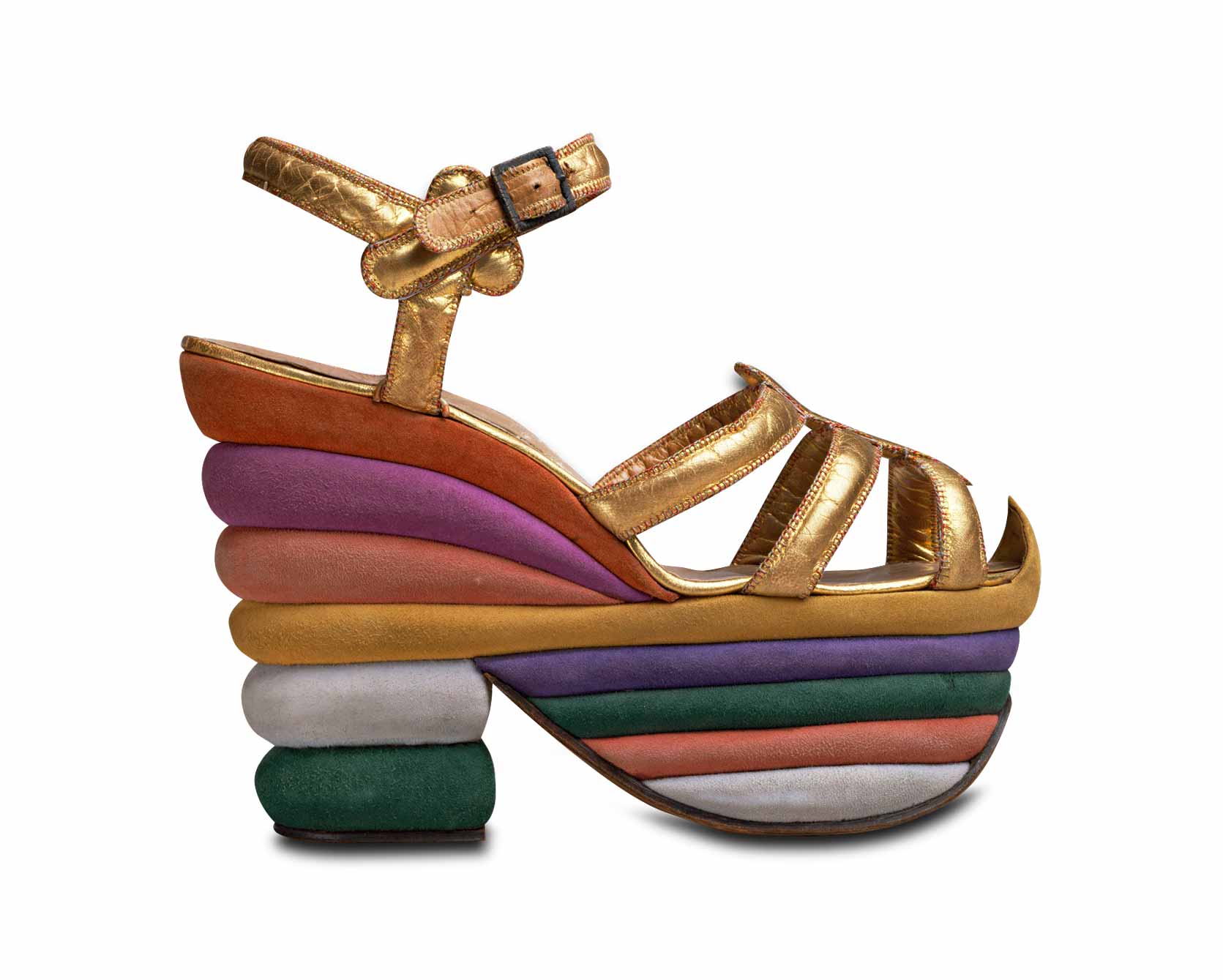
The last time high heels enjoyed a major watercooler moment was during Lady Gaga’s creative peak. It was thanks to her darkly surreal “Bad Romance” video in 2009, wherein she donned British designer Alexander McQueen’s impossible Armadillo heels. Not your mother’s stilettos, they pretzeled a woman’s foot into a hysterically arched 10-inch hoof no longer resembling anything human, let alone womanly. Viewers were simultaneously repelled and intrigued. The shoes cemented Gaga’s reputation as pop’s stand-alone freaky savant.
Now it’s the laid-back age of Miley Cyrus, bespoke streetwear and luxe sneakers, and the influence of Gaga and headline-grabbing heels has flatlined. But as “Killer Heels: The Art of the High-Heeled Shoe,” at the Brooklyn Museum through Feb. 15, proves, the trend-cycle back burner can be a place for reflection and maybe even resurrection. Featuring more than 160 extreme designs and spanning 400 years, the exhibit, which was organized by Brooklyn curator Lisa Small, dizzily showcases high heels as instruments of torture, pleasure, power, prestige and innovation and anoints their creators–from 17th century cobblers to today’s tech-minded experimentalists–as brave cultural architects. It’s enough to make the Taylor Swift generation’s preference for Keds slip-ons seem woefully vanilla. Then again, in 2014, influence in matters of style comes not so much from wearing something to elevate yourself as it does from uniting with others around shared choices, many of them bland. This new collectivist attitude toward fashion has been called “normcore.” “Killer Heels” stomps all over it.
One thing this show demonstrates is that enduring painful, vertigo-inducing heights to look cool has been a timeless tool of social posturing and power dynamics. Blame first the infamous Venetian chopines of the 16th century. Those were massive proto–platform shoes that measured up to 20 in. and were adored by aristocrats and courtesans alike until waves of ridicule helped push them out of favor. (Sound familiar?) But their influence is still felt everywhere–in World War II–era rainbow platforms by Salvatore Ferragamo, in Terry de Havilland’s unisex discotheque platforms and in today’s towering 3-D-printed wedges by United Nude.
Then there’s the issue of the sadomasochistic edge of so many heels. Whereas once it was frothy, feathered backless mules that symbolized boudoir allure, today’s approach is much less flirt, way more threat. Consider the Christian Louboutin Fetish Ballerine heels–produced in collaboration with filmmaker David Lynch–which embody agony and elegance at the same time. Towering pointe stilettos, the shoes are so severe that only a ballet corps’ most stoic martyr could tolerate them. Cue parallels to the obsolete practice of foot binding, used to emphasize femininity by breaking a woman’s feet into submissive husks.
One way this show might revive interest in heels is in how it spotlights sci-fi-worthy fabrications by designers like Winde Rienstra, whose wedges made of bamboo and plastic cable ties are a half-foot of jagged, cantilevered angles, resembling 22nd century dojo architecture. Julian Hakes’ equally space-age Mojito heels encase the foot in a dubious (but reportedly comfy) lime corkscrew, while Tea Petrovic’s Wings/Variation shoes are wearable origami. These whimsical designs thrive on reinventing possibilities. A special few even assign a function to their fashion, like the fantastic stilettos by Masaya Kushino that feature a steampunk-inspired filter that plants seeds in the ground, giving life with every step. Exploring shoes less as weapons and more as microcosms of experimentation feels right–something fashion historians will have to do to convert a generation that’s not so hot on heels.
More Must-Reads From TIME
- The 100 Most Influential People of 2024
- The Revolution of Yulia Navalnaya
- 6 Compliments That Land Every Time
- What's the Deal With the Bitcoin Halving?
- If You're Dating Right Now , You're Brave: Column
- The AI That Could Heal a Divided Internet
- Fallout Is a Brilliant Model for the Future of Video Game Adaptations
- Want Weekly Recs on What to Watch, Read, and More? Sign Up for Worth Your Time
Contact us at letters@time.com